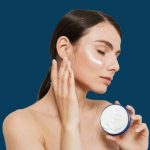Health Canada Cosmetic Hotlist Updates 2025: Natural Health Products and the Cosmetic Hot List Changes
In February 2025, Health Canada’s Consumer and Hazardous Product Safety Directorate amended several ingredients on the Cosmetic Ingredient Hotlist. The Hotlist serves as an administrative tool to identify prohibited and restricted substances in cosmetics. These changes are to better mitigate potential risks related to these ingredients in Cosmetic Products that may pose concerns to consumers.
Since the ingredients on the Hotlist and Natural Health Product Ingredient Database (NHPID) are now subject to additional requirements or restrictions, the Non-prescription and Natural Health Products Directorate (NNHPD) will notify licence holders of previously licensed NHPs containing these ingredients to remind them of their responsibility to support the safety of the impacted products containing the following ingredients and substances:
- m-cresol and o-cresol: amended based on a review of the available data indicating that these ingredients may affect the central nervous system when used on mucous membranes or when used at higher concentrations. Health Canada recognized that different cresols (m-cresol, o-cresol, p-cresol) and mixed cresols and derivatives have different risk profiles, so they chose to create separate entries for these substances to reflect their unique safety considerations and risk profiles.
- a) Not permitted in cosmetics intended to be used on or around mucosal membranes such as eyes, mouth or nose
- b) Other cosmetics 0.1% will require a statement “Do not use in the area of the eye, mouth or nose”
- Peroxide and peroxide-generating compounds: amended to introduce a maximum permitted concentration for hair products due to risk of skin irritation at high concentrations and indicate that these ingredients are not permitted for use in products intended for application to the genital area due to risk of irritation. The maximum concentrations permitted are calculated based on risk assessments, and oral products are subject to the same requirements as the previous version.
- Retinol and its esters: amended to reduce the maximum concentration permitted for certain products such as body lotions. These substances have therapeutic properties, so it is important to limit maximum concentrations to prevent adverse effects.
- a) Leave-on products intended for full body application a maximum of 0.2% total retinol equivalents
- b) Other cosmetics – 1.0% total retinol equivalents
- Aluminum chlorohydrate: under ongoing safety assessment by Health Canada and may be subject to future restrictions as a result of regulatory oversight.
- Thioglycolic acid and thioglycolic acid esters: associated with skin sensitization and long-lasting dermatitis, requiring cautionary statements and strict usage conditions to minimize prolonged exposure risks.
- Benzoyl peroxide: restricted to professional use in nail products due to its potential to cause skin irritation and sensitization. It is important to avoid skin contact and include cautionary statements to ensure safe handling and application.
The items amended in this update include both new and existing entries, and these changes are based on recent findings and scientific evidence to ensure consumer safety.
If your products contain the above ingredients, in the coming weeks NNHPD will be contacting you likely via email to:
- ensure the quantity of the ingredients above are below acceptable limits,
- remove/replace/reduce the ingredient in the products, and/or
- add missing statements to the product licences and labels.
It is important to stay informed about regulatory requirements and updates to ensure ongoing compliance. The Hotlist is updated in response to the Chemicals Management Plan and the Drugs Act, and naturally occurring substances are also evaluated for safety as part of this process.
If you have any questions Dell Tech can help. We can make the required changes to your submissions and guide you in any label changes, including the Product Facts tablet format if you have not started building labels with the new format as of yet. When making label changes, ensure that cautionary statements are included for restricted substances, especially those with known risks of skin sensitization or irritation.
DELL TECH HAS PROVIDED PROFESSIONAL, CONFIDENTIAL CONSULTING SERVICES TO THE SPECIALTY CHEMICAL INDUSTRY IN CANADA, THE USA, EUROPE AND ASIA FOR THE LAST 40 YEARS.





